There are times when data protection needs go beyond things like RAID or encryption and into the realm of physical protection. Sometimes data needs to be stored in locations that are subject to physical harm as well as the usual culprits in data protection. ioSafe is a company that has always been able to answer the call of unforeseen protection and are doing it again with their new ioSafe Duo. The Duo is a dual-bay direct attached storage (DAS) device that can reliably store up to 16TB of data with RAID1 protection as well as protect it in the case of fire or flood.
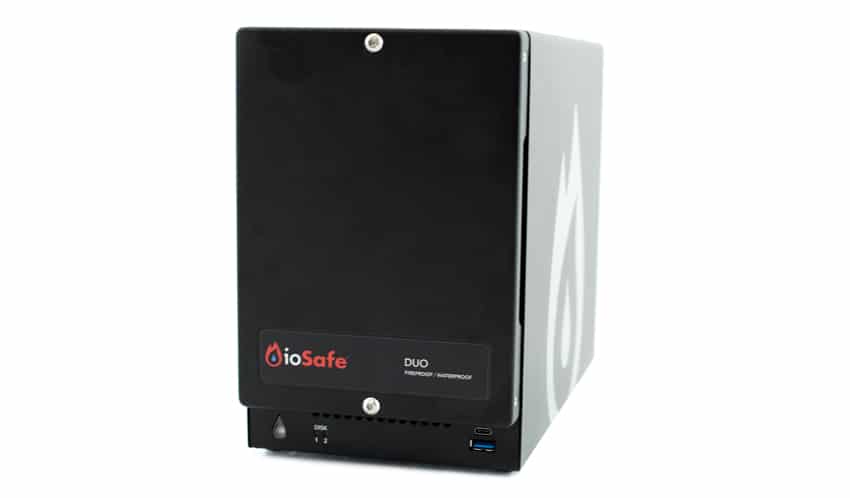
The ioSafe Duo provides data protection leveraging RAID (default RAID1 but supports RAID 0, JBOD, and SPAN as well) keeping dual copies of important data. This is a way to protect the data in the case of a drive failure. But ioSafe knows other things can happen. Home and business fires can wipe out data physically. For those that can’t backup to the cloud, for regulatory or price reasons, adding an extra level of protection to their data is a good idea. Not only can the Duo withstand fire, it is also waterproof ideal for floods or the fire department’s hose in the case of a fire. And finally, the non-conventional route of is making the DAS semi-theftproof through a built-in Kensington lock or the ability to padlock the device to a location.
From a hardware/performance perspective, the ioSafe Duo leverages USB 3.2 Gen 2 ports (both type-A and Type-C) which can offer speeds as high as 10Gbps. The Duo leverages HDDs, so users will be stuck with the limitation of that particular technology. However, this also allows for much higher capacities for a good price. The target workloads for the Duo are typically something that needs super high performance of say an NVMe SSD. The Duo is compatible with Windows 10, 8.1, and 7 as well as macOS 10.13 or newer and most Linux distributions.
For those that are interested in a video review, you can check ours out here:
The ioSafe Duo comes with a 2-year warranty and can be purchased for $399 for the diskless model.
ioSafe Duo Specifications
| Storage | |
| Bays | 2 |
| Drive Type Supported | 3.5” SATA HDD |
| Hot-swappable | No |
| External ports | USB 3.2 Gen 2 x3 (Type-C x2, Type-A) |
| Supported Clients | Windows 10, 8.1 and 7 macOS 10.13 “High Sierra” or newer most Linux distributions |
| Data Protection | |
| DataCast Fire Protection | Protects data from fire. Up to 1550°F, 30 minutes per ASTM E-119 |
| HydroSafe Water Protection | Protects data from flood. Fully submersed, fresh or salt water, 10 foot depth, 72 hours |
| RAID Protection | RAID 1 by default. Can be configured to RAID 0, JBOD, or SPAN |
| Security Protection | Kensington Security Slot. Optional Floor Mount / Padlock Kit |
| Physical | |
| Size (HxWxD) | 5.9in x 11.5in x 9.06in (150mm x 292mm x 230mm) |
| Weight | 23.8 pounds (10.80 kg) (unpopulated) |
| Environmental | |
| Operating Temperature | 5°C to 35°C (40°F to 95°F) |
| Storage Temperature | -10°C to 70°C (15°F to 155°F) |
| Relative Humidity | 5% to 95%RH |
| Power supply | 60W 12V 5A Adapter |
Design and Build
The ioSafe Duo feels like a solid block of metal and is heavier than the typical DAS or NAS device of the same footprint. The front of the device is largely covered by a black metal plate held on with hex screws. Along the bottom of the device going from left to right is a power button, disk status lights for either disk and two USB ports; a Type-C and Type-A.
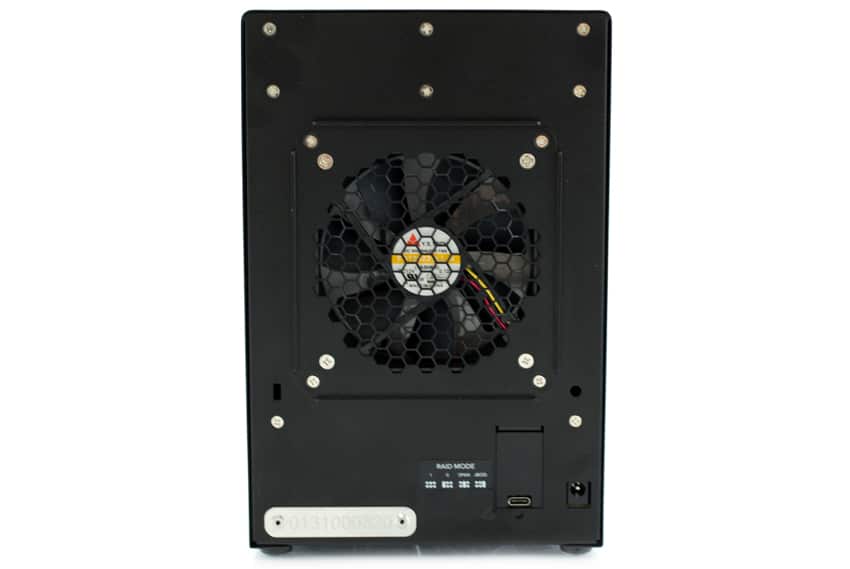
Flipping the device around to the rear we see most of the real estate taken up by a system fan. On the left is a Kensington lock slot. Near the bottom is the RAID jumper pin cover (to change the RAID setting), another USB Type-C port, and the power connector port. Users should be aware that the lock slot will protect from spur of the moment theft, but won’t save you if someone comes prepared with wire cutters or the like.
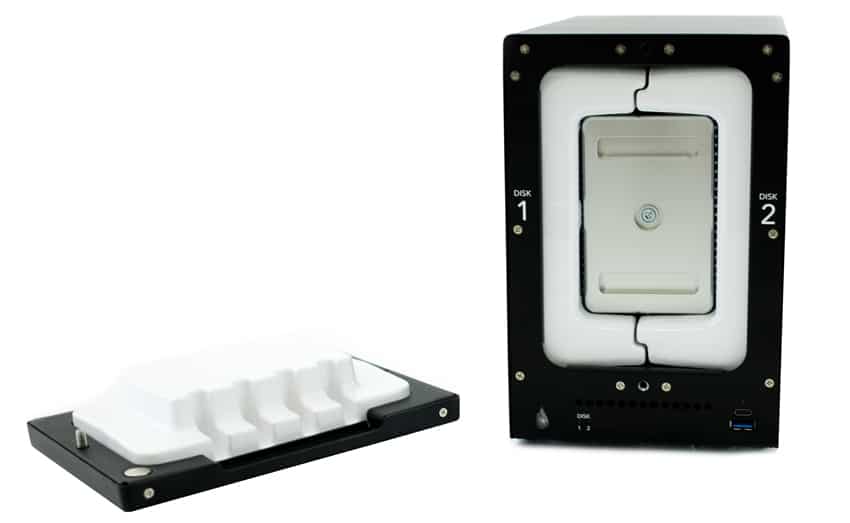
Where the Duo gets a bit more serviceable while still remaining user friendly is in installing or removing the drives. The device comes with a hex tool to remove the front screws on the cover.
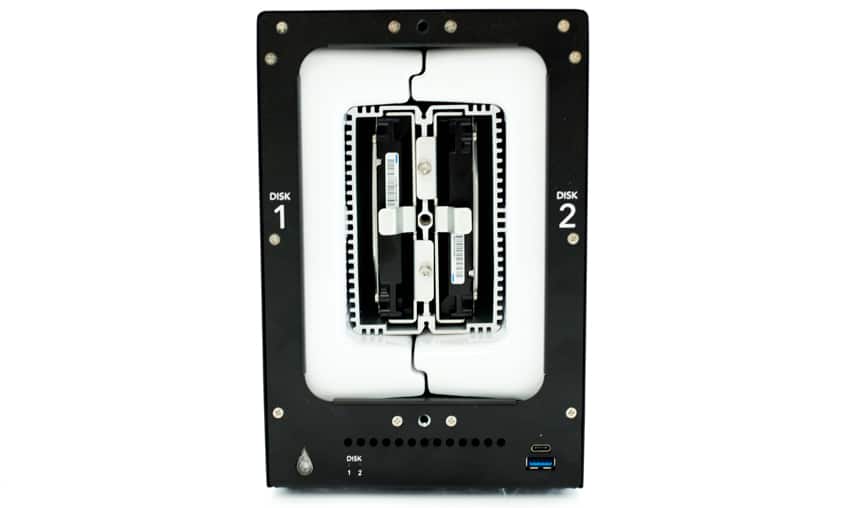
The same tool is used to remove the waterproof cover under the main cover.
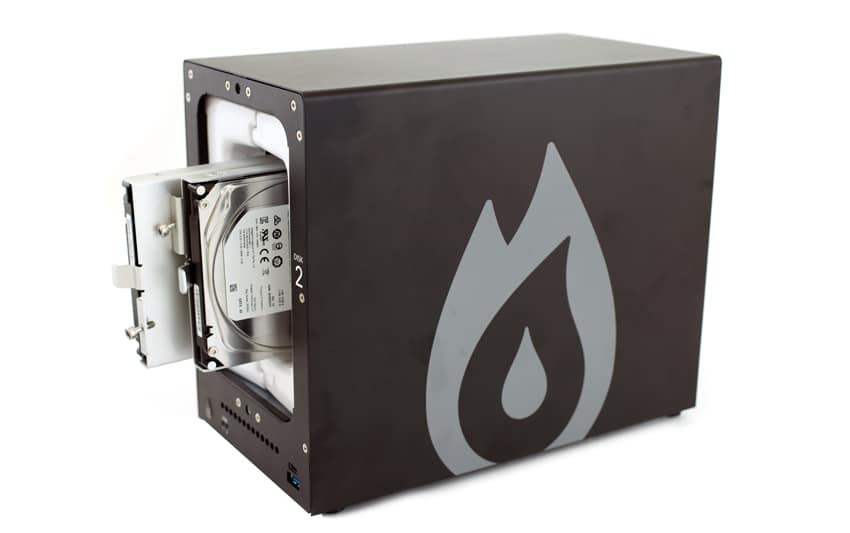
The drive trays again used the same hex screws for removal and then the drives need to be unscrewed to come out.
Performance
For our performance testing we left the Duo in its default RAID1 setting (less performance but better data protection). The drives leveraged were two 4TB Seagate Barracuda HDDs. We tested the device with BlackMagic on a current generation MacBook Air and we used IOMeter with a HP Spectre x360.
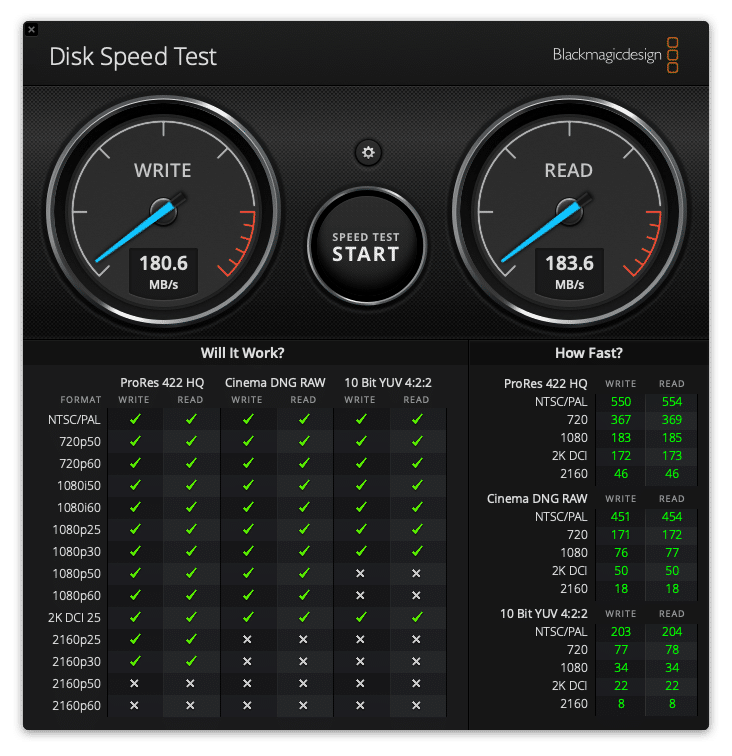
With the BlackMagic test we saw 183.6MB/s read and 180.6MB/s write.
For IOMeter we saw sequential 2MB speeds of 183.4MB/s read and 183.7MB/s write. For random 2MB the DAS hit 99.9MB/s read and 143.6MB/s write. For 4K random IOPS, we saw 113.4 IOPS read and 294.9 IOPS write.
Conclusion
The ioSafe Duo is the Rasputin of DAS devices. Not only does it leverage RAID to mirror and protect data, you can burn it, drown it, and try to steal it and it keeps files safe. These added protections are great for those that don’t want to or can’t backup to cloud but need to be sure they won’t lose data in the case of a disaster such as a fire or flood. Users can leverage RAID1 for data protection or they can use RAID0, JBOD, or SPAN for differing needs or a maximum capacity up to 16TB. The DAS leverages USB 3.2 Gen 2 (both Type-A and Type-C) for transfer speeds up to 10Gbps.
For performance we leveraged two 4TB Seagate Barracuda HDDs with the default RAID1 setting of the ioSafe Duo. For BlackMagic, the Duo hit 183.6MB/s read and 180.6MB/s write, roughly the quoted speed on the Barracuda drives. In IOMeter the DAS had 2MB read speeds of 183.4MB/s sequential and 99.9MB/s random. For 2MB write speeds, the Duo hit 183.7MB/s sequential and 143.6MB/s random. We saw 4K IOPS of 113.4 IOPS read and 294.9 IOPS write.
While natural disasters are hard to predict, some businesses and home offices are located in areas where wild fires or floods are more likely to happen. In that case, the ioSafe Duo will protect that users’ data even in the worst-case scenario while providing enough speed for most tasks such as a local backup target, shared storage from an attached server, or even scratch space for a notebook.




 Amazon
Amazon